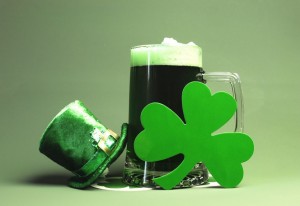 Green beer is a St. Patrick’s Day tradition, in America. It is certainly festive, but is it safe? For most people, indulging in the dyed beverage once a year is no more dangerous than indulging in beer that has not been colored. If you drink responsibly, the addition of some green food coloring is relatively safe. However, for some, food dyes can cause allergic reactions and other health problems, and the long-term safety of regular exposure to artificial food coloring is questionable.
Green beer is a St. Patrick’s Day tradition, in America. It is certainly festive, but is it safe? For most people, indulging in the dyed beverage once a year is no more dangerous than indulging in beer that has not been colored. If you drink responsibly, the addition of some green food coloring is relatively safe. However, for some, food dyes can cause allergic reactions and other health problems, and the long-term safety of regular exposure to artificial food coloring is questionable.
Food Coloring Dangers
Studies have linked food dyes to hyperactivity in children and some dyes have been linked to certain types of cancer. Over the years, many food dyes have been banned and only seven are still allowed by the U.S. Food and Drug Administration (FDA). Six of those seven have been banned in at least one country, green 3 and red 40 are banned in the entire European Economic Community (EEC).
That being said, the average American consumes such a huge amount of food dye on a daily basis that some green beer on St. Patrick’s Day should not make any difference in the potential long-term risk of developing cancer for most people.
For some individuals, however, green beer can cause an immediate health problem because food dyes can be a trigger for:
- Migraines
- Anxiety
- Allergic reactions
Since food coloring is not generally meant to be absorbed by the body, overindulging in green beer may result in greater gastrointestinal discomfort than overindulging in beer that does not have the added dye.















